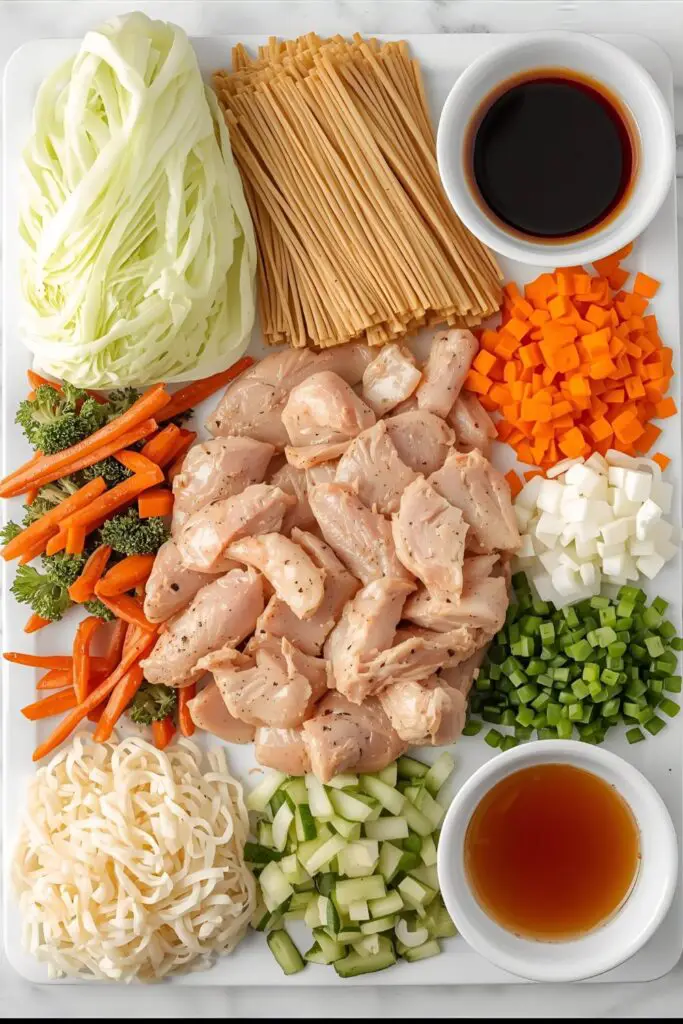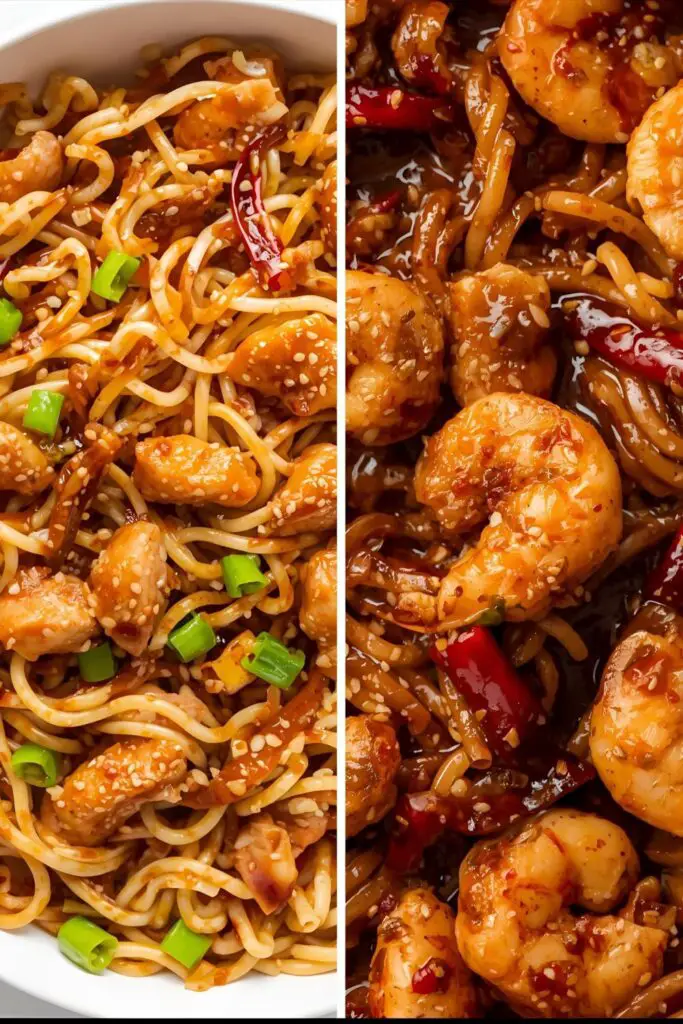How to Make Chow Mein Noodles (Better Than Takeout, Seriously)
Picture this: it’s Friday night. You’re chilling, maybe binging your favorite show, and the craving hits. That irresistible urge for greasy, savory, perfectly slurpable chow mein noodles. You reach for your phone, ready to dial for takeout, but then you pause. What if you could make it yourself? What if you could skip the delivery fee, avoid the questionable ingredient list, and whip up a batch of chow mein so good it would make your local joint weep with envy? Good news, my friend, you totally can. Today, we’re diving into how to make chow mein noodles that will absolutely blow your mind (and save you some cash, IMO).
Why This Recipe Is Awesome (And Will Elevate Your Weeknights)
So, why bother making chow mein at home when there’s a takeout menu just a phone call away? Because this recipe is lightning-fast, incredibly flavorful, and shockingly easy. You control the ingredients, which means fresh veggies, perfectly cooked noodles, and a sauce that hits all the right notes of savory, sweet, and umami. No weird, gummy textures here, just pure noodle bliss.
Plus, let’s be real, a homemade meal always tastes better, right? You’ll get that satisfying crunch from the perfectly stir-fried veggies, the chewiness of the noodles, and a sauce that clings to every strand. It’s perfect for a quick weeknight dinner, impressive enough for casual guests, and honestly, way more fun than waiting for a delivery driver. Get ready to impress yourself!
Ingredients: Your Shopping List for Noodle Nirvana

Don’t panic! Most of these are pantry staples or easy finds at any grocery store.
- 1 lb fresh or dried chow mein noodles (look for “yakisoba” or “lo mein” noodles if you can’t find “chow mein”)
- 1 tbsp sesame oil
- 2 tbsp vegetable oil, plus more for frying
- 1 small yellow onion, thinly sliced
- 2 cups sliced cabbage
- 1 cup shredded carrots
- 1 cup chopped celery (optional, but adds great crunch)
- 1 cup cooked protein of choice (sliced chicken, shrimp, beef, or tofu)
For the Killer Chow Mein Sauce:
- ¼ cup soy sauce
- 1 tbsp dark soy sauce (for color and richer flavor, optional but recommended)
- 1 tbsp oyster sauce (or vegetarian mushroom sauce)
- 1 tbsp rice vinegar
- 1 tsp sugar
- ½ tsp white pepper
- 1 clove garlic, minced
- 1 tsp fresh ginger, grated
Key Substitutions:
- Noodles: Fresh yakisoba or lo mein noodles are ideal. If using dried, follow package instructions for al dente, then rinse well.
- Oyster Sauce: If you’re vegetarian or just don’t like it, a good mushroom-flavored vegetarian oyster sauce works wonders.
- Vegetables: Feel free to swap in your favorites! Snap peas, bell peppers, or bean sprouts are all great additions.
Tools & Kitchen Gadgets Used: Your Stir-Fry Squad
You don’t need a professional wok, but a few basics help immensely.
- Large Wok or Large Skillet (A wide, deep pan is crucial for stir-frying.)
- Large Pot (For boiling the noodles.)
- Colander (For draining noodles.)
- Small Bowl (For whisking the sauce.)
- Whisk (For making that perfect sauce.)
- Sharp Knife (For all that chopping.)
- Cutting Board
- Tongs or Spatula (For tossing the noodles.)
- Measuring Cups and Spoons
Step-by-Step Instructions: Get Ready to Toss!
This recipe moves fast once you start cooking, so do all your prep first! Trust me, you’ll thank yourself.
- Noodle Prep: Bring a large pot of water to a boil. Add the chow mein noodles and cook according to package directions until just tender, but still with a slight bite (al dente). Don’t overcook them! Drain them in a colander and immediately rinse with cold water to stop cooking and remove excess starch. Toss with 1 tbsp sesame oil to prevent sticking. Set aside.
- Whisk the Sauce: In your small bowl, whisk together all the sauce ingredients: soy sauce, dark soy sauce (if using), oyster sauce, rice vinegar, sugar, white pepper, minced garlic, and grated ginger. Give it a good stir.
- Heat the Wok: Place your wok or large skillet over high heat. Add 2 tbsp vegetable oil and let it get nice and shimmering. We’re looking for hot and fast, people!
- Stir-Fry Aromatics & Veggies: Add the sliced onion to the hot wok and stir-fry for 1-2 minutes until slightly softened. Then, toss in the cabbage, shredded carrots, and chopped celery (if using). Stir-fry for 3-4 minutes until the vegetables are tender-crisp. Don’t let them get soggy!
- Add Protein: Push the vegetables to one side of the wok. Add your cooked protein of choice (chicken, shrimp, etc.) to the empty side and stir-fry for 1-2 minutes to heat through.
- Combine and Noodle Up: Push the protein and vegetables together. Add the prepared chow mein noodles to the wok. Pour the whisked sauce evenly over the noodles and vegetables.
- Toss It Up! Using tongs or two spatulas, toss everything together vigorously for 2-3 minutes. Make sure the sauce evenly coats all the noodles and veggies. You want a little char on the noodles, so don’t be afraid to let them sit on the hot surface for a few seconds before tossing again.
- Serve Immediately: Chow mein is best served hot off the wok. Dish it out and marvel at your culinary masterpiece!
Calories & Nutritional Info (Per Serving, Estimated)
This is a general estimate for one serving, assuming four servings. Your actual numbers will vary based on protein choice and how much oil you use.
- Estimated Calories per serving: ~400-550 calories
- Fat: ~15-25g
- Carbohydrates: ~50-70g
- Protein: ~20-30g
- Sodium: Yep, it’s a bit high, but worth it. Think of it as flavor. TBH.
Nutritional Notes:
- A good source of carbohydrates for energy.
- Contains a decent amount of vegetables for fiber and vitamins.
- Protein content depends entirely on your choice of add-ins.
Common Mistakes to Avoid: Don’t Ruin Your Noodly Masterpiece
Avoid these pitfalls to achieve chow mein perfection.
- Overcooking the Noodles: Mushy noodles are a sad, sad sight. Cook them al dente and rinse them cold to stop the cooking process.
- Under-heating the Wok: Stir-frying needs high heat. If your pan isn’t hot enough, your veggies will steam instead of fry, leading to a soggy mess.
- Overcrowding the Pan: This is a big one! If you add too much at once, the temperature drops, and everything steams. Cook in batches if your wok isn’t big enough.
- Not Prepping Everything First: Once you start cooking, it’s a whirlwind. Have all your ingredients chopped, sauced, and ready to go before you turn on the heat.
- Being Shy with the Sauce: Make sure every noodle gets a generous coating of that delicious sauce. Toss, toss, toss!
Variations & Customizations: Your Noodle, Your Rules
This is just the basic framework. Feel free to get creative!
- Spicy Sensation: Add a teaspoon of chili garlic sauce or a pinch of red pepper flakes to the wok with the vegetables, or a drizzle of chili oil at the end.
- Garlic Lover’s Dream: Double the minced garlic and add it with the ginger. You know you want to.
- Veggie Extravaganza: Load it up with your favorite greens! Bok choy, spinach, mushrooms, or bean sprouts are all fantastic additions. Add more delicate veggies like bean sprouts at the very end.
- Protein Power-Up: Swap the chicken for thinly sliced pork, tender beef strips, shrimp, or even some crispy pan-fried tofu.
FAQ Section: All Your Chow Mein Conundrums Solved
Got more questions about achieving noodle nirvana? I’ve got answers!
- Q: What kind of noodles should I use for chow mein? A: Look for fresh or dried chow mein noodles, sometimes labeled “yakisoba” or “lo mein” noodles. They are typically wheat-based and round or flat. Don’t use ramen or spaghetti; the texture won’t be right.
- Q: Can I use pre-cooked noodles? A: Yes, if you find pre-cooked chow mein noodles (often in the refrigerated section), you can use them. Just boil them for a shorter time, usually 1-2 minutes, to loosen them up, then rinse and toss with sesame oil.
- Q: What’s the difference between chow mein and lo mein? A: They both use similar wheat-flour noodles. Chow mein generally means “fried noodles,” resulting in a slightly crispier, drier texture. Lo mein means “tossed noodles” and typically has a saucier, softer noodle. This recipe leans more towards a takeout-style chow mein.
- Q: Why do my noodles stick together? A: You probably didn’t rinse them thoroughly after boiling, or you skipped tossing them with sesame oil. That sesame oil is your best friend for preventing sticky noodles.
- Q: Can I make this vegetarian/vegan? A: Absolutely! Replace the protein with crispy tofu, tempeh, or a mix of extra vegetables. Use a vegetarian mushroom-flavored oyster sauce instead of regular oyster sauce.
- Q: How do I get that smoky “wok hei” flavor at home? A: It’s tough to perfectly replicate without a commercial-grade burner, but you can get close! Use a screaming hot wok, don’t overcrowd the pan, and let ingredients get a little char before tossing. That intense heat is key.
- Q: How do I store leftovers? A: Store leftover chow mein in an airtight container in the refrigerator for up to 3-4 days. Reheat in a skillet or microwave until hot.
Final Thoughts: Say Goodbye to Takeout Guilt!
You’ve done it! You’ve successfully navigated the exciting world of homemade chow mein. No more soggy noodles, no more bland flavors, and definitely no more wondering what exactly that “special sauce” contains. You are now a chow mein master, capable of conjuring up this deliciousness whenever the craving strikes. So go ahead, pat yourself on the back, and enjoy every single slurp. Your takeout days are officially numbered!


